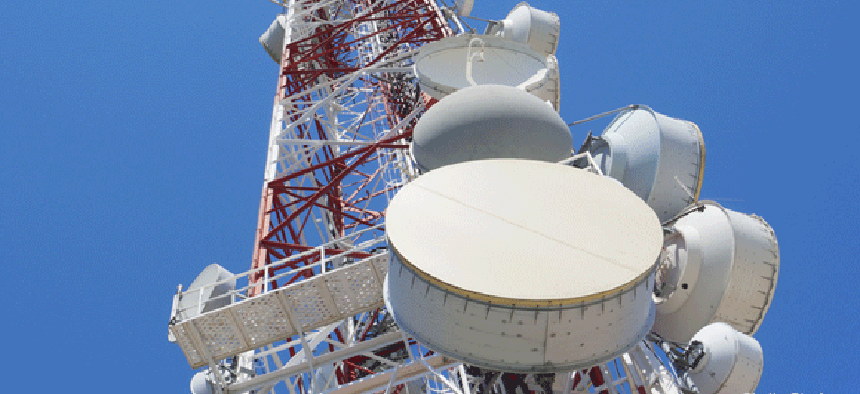Feds' next step in clearing RF spectrum could be a challenge


Connecting state and local government leaders
Clearing out a band of RF spectrum for commercial use appears to be paying off for government, a GAO study found, but clearing a second band could be more difficult.
Moving a dozen agencies out of a band of radio spectrum to make way for commercial users appears to have been a good deal for the government, which could come out more than $5 billion ahead when the move is completed, expected in 2017, according to a study by the Government Accountability Office.
But a plan federal regulators are studying to clear a second band of RF spectrum heavily used by government, particularly the Defense Department, could create greater costs and challenges — and where in the spectrum those agencies would go hasn’t been resolved, GAO said.

Source: GAO
DOD now has 11 major radio systems operating in that second band, 1755-1850 MHz, and estimated that it could cost $12.6 billion to move out of it. If the move could be made, one preliminary industry estimate gave an auction value of the band of $19.4 billion.
No decision has been made about when or where the systems would be moved, however, which could have a big impact on the costs. Uses for this spectrum include unmanned aerial systems, which have increased greatly in the last few years. Although DOD said much of the move could be made within 10 years, it could take until 2035 to relocate some satellite systems. And some electronic warfare operations would continue in the band, complicating the use of these airwaves by commercial users.
The shuffle is the result of the need to balance the increasing demand for RF spectrum to support new commercial devices and services with the government’s need for airwaves to carry out is missions. Because of growing demand, “nearly all parties are becoming increasingly concerned about the availability of radio frequency spectrum to meet future commercial and federal needs,” GAO said. “Balancing competing industry and government demands for a limited amount of spectrum, today and in the future, is a challenging and complex task.”
The Federal Communications Commission manages spectrum for nonfederal users, including commercial, private and state and local government users, and the Commerce Department’s National Telecommunications and Information Administration manages spectrum for federal government users. In 2010 the two agencies were charged with coming up with a plan to make 500 MHz of spectrum available for commercial use.
Under the Commercial Spectrum Enhancement Act of 2004, the cost of relocating agency systems operating in spectrum offered to commercial users is paid for through the auction of that spectrum.
The first major shift under this law was the clearing of the 1710-1755 MHz band for commercial use. Initial cost estimates of moving agencies were about $1 billion, but GAO estimates the final cost to be about $1.5 billion. The government took in about $6.9 billion from the spectrum auction.
DOD actually came in under its initial cost estimate of $355 million for the move, in part because many of its systems could be easily retuned to operate in the band from 1755 MHz to 1850 MHz.
But that 1755-1850 MHz band now is being considered for commercial use. “NTIA’s analysis showed that while there are significant challenges to overcome, it might be possible to free up all 95 MHz of spectrum in the 1755-1850 MHz band,” GAO said.
NTIA preliminary estimates of cost to relocate agency systems from this band are $18 billion total, of which $12.6 billion is for DOD alone. These estimates are based on assumptions that could change significantly by the time any decision is made, however.
At the same time, “it is too early to produce meaningful forecasts for a potential auction.” The industry estimate of $19.4 billion in auction value also is based on assumptions that could change significantly.




